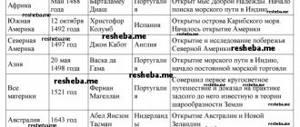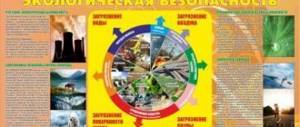- Reports and messages
- Miscellaneous
- Fire safety
A fire is a combustion process that is completely uncontrollable; a fire causes enormous financial harm, damage to the health and lives of people.
During a fire, people around are exposed to dangerous influences, such as fire, sparks, smoke, toxic combustion products, falling parts of buildings and installations. For this reason, undoubtedly, the provision of fire protection is considered a priority problem both for the state as a whole, and for individual companies, and for the population in particular.
Fire safety is the state of safety of a person, his property, the state and society from fires. Currently, at the state level, fire protection standards for buildings, settlements, buildings and objects of various types are available and confirmed.
Fire safety can be guaranteed by fire prevention measures and intensive fire protection. Fire prevention contains a set of measures that were aimed at eliminating a fire or reducing its consequences. Active fire protection is measures that provide successful counteraction to fire or explosive situations.
The heads of the company and individual entrepreneurs at their own facilities are required to have a fire safety system aimed at eliminating the impact on people of unsafe fire conditions, including their secondary manifestations. The necessary degree of fire protection for people must be ensured by the implementation of the criteria of legislative documents on fire safety. maximum permissible values per person per person.
At any facility, annotations on fire protection actions must be developed for each explosive and fire-hazardous place such as a workshop, workshop, etc.
Fire protection at an enterprise includes:
1) the company’s strategy in the field of fire safety issues, and various nuances.
2) acceptable when working with fire-hazardous equipment and flammable means.
3) official responsibilities of managers in the field of security provision.
4) the scope of obligations and capabilities of the employee supervising fire safety compliance
5) information support in the field of fire protection.
6) registration of fires and their consequences;
Persons who are responsible for violating fire safety conditions, other residents for failure to comply with fire safety criteria, as well as other crimes in the field of fire safety may be subject to disciplinary, administrative or criminal punishment in accordance with applicable regulations.
Fire safety message report
In the era of scientific and technological progress, when the world is constantly developing, offering people more and more new goods, erecting new skyscrapers, in no case should one neglect one’s own safety and the safety of loved ones. Moreover, you always need to be on alert when it comes to fire safety.
Fire safety is a set of rules that explain how a person should behave - at home with electrical appliances, in the forest, in an emergency, so that no one gets hurt, and everything ends well and without unnecessary panic.
In order to increase the level of awareness of the population about behavior in conditions of danger and fire, briefings with evacuation drills are conducted at all enterprises - companies, universities, schools and preschool institutions.
Many fire safety rules can be found in the instructions for using any household item, be it a TV, hair dryer or mixer. Each of them provides an intelligible justification of what is prohibited to do and for what reasons, as well as what consequences this is fraught with.
According to fire safety regulations, every building must have an evacuation plan. Also, signs about flammable items and materials are placed in all public places.
There are a huge number of fire safety rules, the most common are:
- Do not use chemicals near open flames;
- Do not leave devices and substances in direct sunlight;
- Do not light fires outdoors, especially in the forest;
- In the event of a fire, immediately call the appropriate service;
- Strictly observe safety precautions for the operation of any objects or substances;
- Have only working equipment at home;
- In case of fire, do not panic, following the evacuation plan;
Thus, today fire safety is one of the most important aspects of a person’s life, for which you need to be prepared and know how to behave, because no one knows for sure where and when a fire can happen.
2, 3, 4, 5, 8 grades, life sciences
Presentation for a life safety lesson on the topic “Fires and explosions” - presentation
FIRES AND EXPLOSIONS Presentation on life safety by 8th grade student GBOU secondary school 1465 Vetoshkin Ivan. Teacher Popova S.A.
Section one EXPLOSIONS
An explosion is a combustion reaction in which the rate of heat release exceeds the rate of heat dissipation. In other words, an explosion is the sudden production of a large amount of heat during combustion. An explosion leads to the formation of highly heated gas with very high pressure, which, upon instantaneous destruction, has a mechanical effect on surrounding objects. Explosions occur as a result of the release of chemical, electromagnetic, mechanical energies and the energy of compressed gases. Bomb explosion Most often explosions occur at explosive objects.
Explosive object gas station. An explosive facility is a facility where substances that are capable of exploding under certain conditions are stored, used or transported. The simplest example of an explosive object is an ordinary gas station.
Damaging factors of an explosion Air shock (explosive) wave; Fragmentation fields created by flying fragments of objects and structures damaged by an explosion.
Fire Explosion
Section two FIRES
A fire is an uncontrolled combustion process that causes material damage, harm to the life and health of people, and the interests of society and the state. Fire in the cottage
Factors and substances necessary for a fire to occur: Fire Lack of control Combustible substance or materials Oxidizer (O2 or some other elements and compounds) Ignition source
Classification of fires: Individual fires - fires in a separate building or structure. Such fires are dispersed throughout the area, and it is possible to quickly extinguish them. Massive fires are a collection of individual fires that engulfed more than 25% of buildings in a given development area. It is impossible for the relevant units to pass through or remain in the area where a massive fire occurs without taking measures to localize or extinguish the fire. A firestorm is a special form of fire spread that engulfs more than 90% of buildings. It is characterized by the presence of an upward column of combustion products (smoke) and heated air, as well as an influx of fresh air from all sides to the boundaries of the storm at hurricane speed. You can only be saved by urgently leaving the danger zone at the first sign of a fire.
Space engulfed by fire Active combustion zone - the area in which the fire occurred and to which the flame spreads. Smoke zone is the space adjacent to the combustion zone in which combustion products can spread. Thermal impact zone is the space around the combustion zone in which the temperature reaches values that cause a destructive effect on surrounding objects and is dangerous for humans.
Fire Prevention REMEMBER: a fire is easier to prevent than to extinguish. To prevent fires in a timely manner, it is necessary to remember fire safety rules. They are simple: Keep switches, sockets of the power supply system and plugs of electrical appliances in good working order, and do not allow water to enter the electrical network. Do not overload the electrical network. Do not leave electrical heating devices unattended. When leaving your house or apartment, turn off the lights and electrical appliances. It is advisable to completely de-energize your home. Do not allow children to play with matches and other flammable objects, light gas, or make fires near buildings and cars. Familiarize yourself with the evacuation plan of the facility you are in.
Actions in case of fire: Make an attempt to extinguish the fire yourself using available means; Report the incident to the Ministry of Emergency Situations (101, 01, 112); If an alarm sounds in a public building, immediately leave the building in accordance with the evacuation plan; If your clothes catch fire, do not run, but try to extinguish the flame by rolling, lying on the floor, extinguish it with water or earth; Leave the fire zone to the windward side; When passing through burning rooms, cover your head with a wet cloth. Maintain composure and do not panic.
Popular message topics
- Nature in art
Nature and art are very closely related. Nature inspires writers, poets, artists, sculptors, choreographers and even directors to create real masterpieces. It fills a person - Coffee
Coffee is the favorite drink of most adults. When and where did he first appear? Ethiopia can safely be called the birthplace of coffee. Already in 900 AD. the inhabitants of this country discovered the wonderful properties of the plant. - Orientation on the terrain
When there is no map or compass, how to determine the location? For this purpose, there is such a discipline as terrain orientation. If a person has this knowledge, then it can be useful on vacation, and sometimes even in a critical situation to save
Presentation on life safety on the topic “Fire safety” (8th grade)
Slide description: 11. What should be the place to make a fire? A. away from trees and bushes and no further than 10 meters from a water source B. in inclement weather, the fire must be built under a tree, the crown of which protects it from rain or snow C. the place for making a fire must be cleared of grass, leaves, branches and cover with stones 12. What is forbidden to do when making a fire? A. make a fire in peat bogs B. use dead wood for a fire C. leave less than three people on duty near the fire 13. Passengers of public transport are prohibited from transporting: A. oversized loads B. flammable and explosive substances C. heavy loads 14. How to extinguish a fire a person's clothes? A. direct a stream of fire extinguisher at him B. knock the person to the ground and cover him with a cloth C. rip off his clothes 15. Which of the following substances should not be used to light a stove? A. firewood B. coal C. flammable liquids 16. Why are stove heating chimneys whitened? A. so that cracks and damage are visible B. for beauty C. to improve traction 17. When the train was moving, a smell of burning and smoke appeared in your carriage. How will you proceed? A. go to the neighboring compartments and inform the passengers B. inform the conductor, collect your things and wait for further instructions in the compartment C. pull the stop valve handle 18. What conditions contribute to the spread of a fire? A. lack of natural light B. lack of openings (windows and doors) to remove combustion products C. lack or malfunction of fire extinguishing equipment 19. If a fire occurs, you need to leave the apartment located on the 10th floor. You: A. use the elevator B. go down the external fire escapes C. covering your respiratory organs with your hand, exit through the entrance 20. Having returned from a walk, you opened the door of your apartment and discovered heavy smoke. What are your next steps? A. enter the apartment and look for the source of the smoke B. open the windows to check the apartment C. close the door tightly and call the fire department 18. What conditions contribute to the spread of a fire? A. lack of natural light B. lack of openings (windows and doors) to remove combustion products C. lack or malfunction of fire extinguishing equipment 19. If a fire occurs, you need to leave the apartment located on the 10th floor. You: A. use the elevator B. go down the external fire escapes C. covering your respiratory organs with your hand, exit through the entrance 20. Having returned from a walk, you opened the door of your apartment and discovered heavy smoke. What are your next steps? A. enter the apartment and look for the source of the smoke B. open the windows to check the apartment C. close the door tightly and call the fire department
Lesson summary: safety
Municipal budgetary educational institution
secondary school of the village Key of Life
Eletsky municipal district of Lipetsk region
Lesson summary
in life safety
Lesson topic: Rights, duties and responsibilities of citizens in the field of fire safety. Ensuring personal safety in case of fire.
Teacher - organizer of life safety V.V. Logvinenko
The purpose of the lesson.
To develop in students a sense of responsible attitude towards fire safety rules, to familiarize them with the recommendations of the Ministry of Emergency Situations employees on the rules of behavior to ensure personal safety during a fire.
Equipment:
Presentation (Appendix No. 1).
After studying the topic, students should:
a) know:
about the main causes and consequences of the fire;
your rights and obligations in the field of fire safety;
about the rules of conduct in case of fires in the house and methods of evacuating from a burning room;
b) be able to:
act correctly in the event of a fire in the house;
evacuate from a burning building;
use primary fire extinguishing agents (foam and carbon dioxide fire extinguishers);
c) have
presentation: about the main damaging factors of fire affecting people.
During the classes
I. Organizational moment.
II. Checking homework.
Listen to students' reports about the largest fires over the past year (3-5 min). Conclude that a person’s personal safety in situations arising from a fire depends, first of all, on his behavior, compliance with fire safety rules, and in everyday life, on the ability to act during a fire.
III. Studying a new topic.
Questions to be studied.
Basic rights of citizens in the field of fire safety.
Responsibilities of citizens in the field of fire safety
Responsibility of citizens for violation of fire safety requirements.
Appendix No. 1.
Statistics:
In the Russian Federation, approximately 250 thousand fires occur per year. In which an average of 18-20 thousand people die. Material damage amounts to 50-70 billion rubles. More than 80% of fires are caused by careless human handling of fire.
It should be noted that it is impossible to completely avoid the occurrence of fires in everyday life, but it is necessary to reduce the likelihood of fires by reducing the negative impact of the human factor. To do this, every person must know the general rules of behavior in the field of fire safety and follow them in everyday life.
The need to comply with fire safety rules is dictated by the law of life and determined by the Federal Law “On Fire Safety”
dated December 21, 1994
No. 69-FZ, Decree of the Government of the Russian Federation of April 25, 2012 No. 390 “On the fire safety regime” and other regulatory legal acts of the Russian Federation, which provide for certain rights, duties and responsibilities in the field of fire safety.
Citizens' rights in the field of fire safety
.
In the event of a fire, every person has the right to:
protection of life, health and property;
compensation for damage in accordance with the established procedure;
participation in establishing the causes of a fire that caused damage to health and property;
obtaining information on fire safety issues;
participation in fire safety activities.
Human rights are necessarily supported by his responsibilities.
In the field of fire safety, every person is obliged to:
comply with fire safety requirements (including learning how to handle fire in everyday life; have available fire extinguishing equipment in the house (apartment), learn how to use them;
have primary fire extinguishing equipment in the premises in accordance with fire safety rules;
If fires are detected, immediately notify the fire department;
before the arrival of the fire department, take all feasible measures to extinguish the fire, save people and property;
comply with all lawful requests of fire officials.
Control questions.
What are the basic rights of citizens of the Russian Federation in the field of fire safety?
What are the responsibilities of citizens of the Russian Federation in the field of fire safety and what is their significance for ensuring personal safety?
What types of liability are provided for violation of fire safety rules?
Citizens are responsible for violating fire safety rules in accordance with Article 34 of the Federal Law “On Fire Safety” dated December 21, 1994 No. 69-FZ; for violation of fire safety requirements, as well as for other offenses in its field, they may be subject to disciplinary, administrative or criminal liability.
We will discuss the rules of safe behavior in case of fire in an apartment, in public places, or in the country.
The main causes of fire in the house:
careless handling of fire;
violation of safety rules when using household electrical and electric heating devices;
violation of the rules for storing and using flammable and flammable liquids;
domestic gas leak;
carelessness, negligence and lack of discipline when using fire;
careless handling of pyrotechnic products.
And now I will ask you to tell us about measures to ensure fire safety in the house and together with you we will draw up a list of basic fire safety rules:
do not play with open fire (matches, lighters, burn paper, light candles, etc.);
use only serviceable electrical appliances and electrical equipment;
do not leave electric heating appliances (iron, electric kettle, electric stove, heating appliances, etc.) on unattended;
do not use flammable and flammable liquids (gasoline, kerosene, thinner, acetone, household aerosols, etc.) without the permission of adults;
do not turn on gas stoves unnecessarily and do not leave lit gas burners unattended;
observe safety precautions when handling pyrotechnic products (firecrackers, sparklers, firecrackers, fireworks, etc.);
When installing a New Year tree, do not decorate it with toys made of flammable materials (paper, cotton wool, gauze), and do not hang homemade electric garlands and sparklers on it. Don’t forget to turn off the electric lights when leaving the room where the Christmas tree is installed.
The basic rule for extinguishing a fire is as follows:
cover the burning object with a thick cloth or blanket and immediately leave the room, tightly closing the door behind you. Students should pay special attention to what should not be done in case of fire:
extinguish the fire until the fire department is called (during this time a large fire may break out);
try to exit through a smoke-filled stairwell (hot air burns your lungs, smoke is very toxic);
descend from the upper floors through drainpipes and risers using sheets and ropes, unless there is an urgent need for this, because in the absence of skills, a fall is almost always inevitable;
jump out of windows (according to statistics, starting from the 4th floor, every second jump is fatal).
Consider the situation of leaving a burning or smoke-filled room, the rules of safe behavior in the event that it is impossible to leave the apartment (evacuate) during a fire in the house. What to do if the TV catches fire (explodes)?
To summarize, water is a good conductor of electric current, therefore it is impossible to fill a TV with water even if it is disconnected from the electrical network, since a large residual capacitive voltage can cause electrical injury.
Control questions.
What to do if a fire starts in your apartment?
Is it okay to try to put out a fire yourself?
What to do if it is impossible to leave the building?
In multi-storey residential, administrative and industrial buildings, and in schools, internal fire hydrants are used to extinguish fires, which consist of:
locker;
a tap with a valve to which a fire hose is connected;
fire hose with a connected fire nozzle;
fire trunk.
If a fire is detected, you should open the cabinet, take the barrel, which is already attached to the sleeve, and run with it to the source of fire; then, having put it down, quickly return to the tap, open the valve, then return to the trunk, take it and direct the stream to the source of the fire. You need to act towards the fire, and not follow it.
Small fires (tanning) can be extinguished using fire extinguishers. Let's get to know some of them.
Powder fire extinguishers
are used as a primary means of extinguishing fires of class A (solid substances), B (liquid substances), C (gaseous substances) and electrical installations under voltage up to 1000 V. Fire extinguishers are not intended for extinguishing fires of alkali and alkaline earth metals and other materials, combustion of which can occur without air access. Powder fire extinguishers can be divided into injection and gas generators. Depending on the volume of the cylinder, fire extinguishers are divided into portable and mobile. The charge weight of portable fire extinguishers is 1, 2, 3, 4, 8 liters. For mobile ones, the cylinder capacity is 50, 100 liters.
Operating principle of a fire extinguisher
is based on the use of compressed gas energy for aeration and release of fire extinguishing powder.
Rules for using a fire extinguisher.
To activate the fire extinguisher, it is necessary to pull out the pin or latch;
Point the fire extinguisher at the source of the fire, lift the lever up (or press the button to pierce the gas cylinder);
After 5 seconds, begin extinguishing the fire.
carbon dioxide fire extinguishers
CO2 (carbon dioxide) fire extinguishers are designed to extinguish fires of various substances, the combustion of which cannot occur without access to air, fires on electrified railway and public transport, electrical installations under voltage up to 1000 V, fires in museums, art galleries and archives. Not intended for extinguishing fires of substances whose combustion can occur without air access (aluminum, magnesium and their alloys, sodium, potassium).
Operating principle of a carbon dioxide fire extinguisher.
The operation of a carbon dioxide fire extinguisher is based on the displacement of a charge of carbon dioxide under the influence of its own excess pressure, which is set when the fire extinguisher is filled. Carbon dioxide is in a cylinder under a pressure of 5.7 MPa (58 kgf/cm2) at an ambient temperature of 20°C. The maximum operating pressure in the cylinder at a temperature of +50°C should not exceed 15 MPa (150 kgf/cm2).
How to use a fire extinguisher.
Remove the fire extinguisher and grasp the handle with your left hand.
With one hand, point the nozzle at the source of the fire;
Press the power lever until a snow-like mass appears;
Direct the snow-like mass coming out of the bell not towards the flame, but towards the burning surface.
Security measures
You need to wear gloves when working with a fire extinguisher.
After extinguishing, you need to thoroughly ventilate the room.
PROHIBITED:
Do not touch the bell, especially handle it with bare hands, as you can get low-temperature burns.
Tilt or invert the fire extinguisher.
Control questions.
What fire extinguishing means do you know?
How to use them correctly?
List what can be used as improvised fire extinguishing agents?
IV. Homework
1. Learn the rules of safe behavior in case of fire.
2. Practical task.
In your workbook, draw a floor plan of the school where your classroom is located and an escape route in case of fire.
Imagine having to get out of your apartment in heavy smoke or in the dark. Make a “blind” escape route, describing in detail all the passages, turns, doors, etc., learn it by heart.






